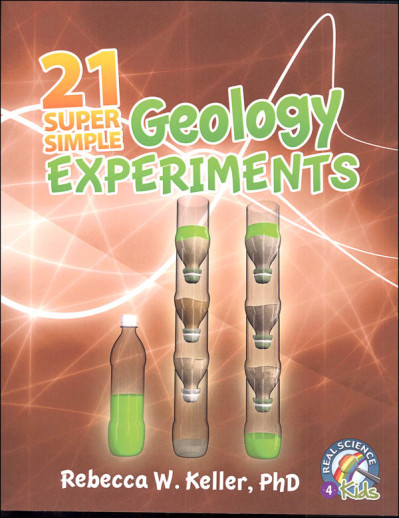We use cookies to make your experience better. To comply with the new e-Privacy directive, we need to ask for your consent to set the cookies. Learn more.
21 Super Simple Geology Experiments
Dr. Rebecca Keller of Gravitas has compiled a selection of terrific, "super-simple" science experiments that can be used with any science curriculum. Super Simple Science Experiments breaks down the steps of scientific investigation and allow students to focus on one bite at a time. These experiments can be done with household items and help students develop skills needed for higher level science thinking. Each experiment is only one page in length and includes an objective, materials needed and an outline of the experiment. Other embellishments include a one-word description of the skill being developed (found in an upper corner of the page), illustrations if necessary, and the 'results and conclusions' for that particular experiment. A cumulative materials list is found at the front of each book and any pages or templates needed for the experiments are found at the back of the book and are reproducible for family use. Examples from the chemistry experiments book are identifying elements from the periodic table, testing for bases and acids, separating ink, polymers, making a DNA model, and osmosis. In astronomy children will be constructing models of the planets, sun and moon, finding the constellations and important stars, and more.
As of press time astronomy, biology, and chemistry are in print, but others in the series will follow. 101 Science Experiments will include some experiments from the other books in the series along with a few new ones.
The Super Simple Science Experiments Lab Notebook is also available and is referenced in many of the experiments. This notebook offers boxes for sketching and blank wide-ruled lines for writing as directed in the experiments. The laboratory notebook is not required. Students can use a notebook or notesketch pad (20178, 20179, 19930) which has room on each page for sketching and writing.
If you are looking to add more hands-on time to your science curriculum or you want to add more to your Gravitas curriculum, these books are a great option. The experiments included in these books overlap very little with the experiments found in the Gravitas curriculum therefore would serve as a good extension to the program. This series offers some good, simple hands-on alternatives. ~ Donna
| Product Format: | Softcover Book |
|---|---|
| Grades: | 4-6 |
| Brand: | Gravitas Publications |
| ISBN: | 9781941181263 |
| Length in Inches: | 10 |
| Width in Inches: | 8 |
| Height in Inches: | 0.125 |
| Weight in Pounds: | 0.2 |
Be the first to review this item


We use Real Science 4 Kids, Focus On Series but the experiments that come with the set of books overwhelm me. I thought this was a much easier and straight forward book with experiments by the same author.
Great budget friendly experiments.